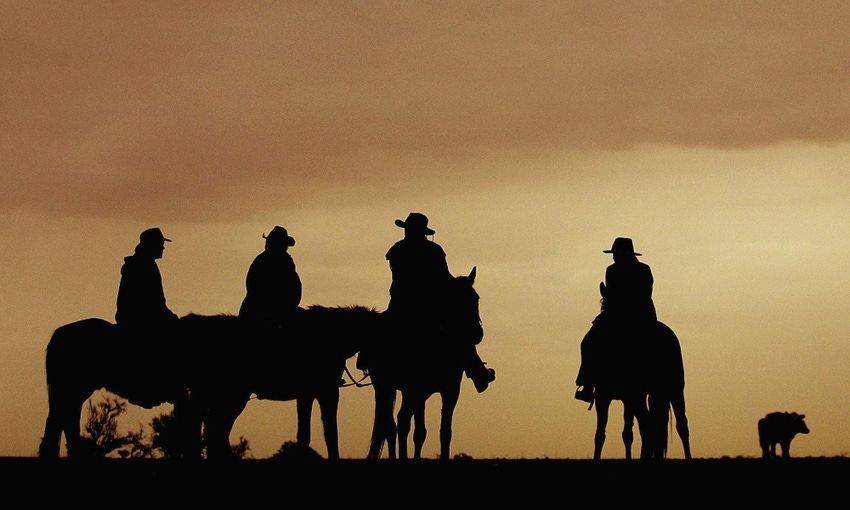Everyone deals with government agencies, whether at the local, state or federal level. Make them your allies, and everyone’s world is better.

If there was a central theme during the Cattlemen’s College session on interacting with federal agencies—and there most definitely was—it’s that you can accomplish a lot more by working together, communicating and establishing a level of trust than you ever can by bowing up, locking horns and pushing back.
The Cattlemen’s College sessions were held on the first day of the Cattle Industry Convention in Phoenix last month. If you’ve never attended the convention, the Cattlemen’s College sessions alone make the trip well worthwhile.
All four speakers, two from the beef business and two representing federal agencies, echoed that theme, using examples from their own experiences to show how successful you can be by cooperating with others.
RELATED: How do we keep volunteer fire departments strong?
“All my life I watched my father battle with the BLM (Bureau of Land Management) and butt heads,” said Niels Hansen, who ranches near Rawlings, Wyo. “I grew up and picked up the sword and tried to do the same thing. After a while, I figured out that all I was doing, I won a battle once in a while, but we were losing the war.”
Then, the area got some new range people in the office. “I went in and had a conversation, addressed some of the issues we had in the past. Didn’t solve any of them, but we recognized they were there. And we agreed to go forward, we agreed to disagree, and we agreed to never lie to one another. If you had something that you knew the other person wasn’t going to like, doesn’t matter, lay it out on the table so we can address it and go on.”
RELATED: Regional Environmental Stewardship winners named
With that relationship established, they moved forward. “one of the main things we did to give the BLM the tools and the reason to support us and join us in the fights. Number one, we did, over time, make sure we got to know each other and learned each other’s values. And we found that, like so often, we were all pulling for the same goal. We wanted the same thing, it was just a matter of how to get there.
“We have a database now of over 25 years of monitoring data on the ranch. So we’ve given the BLM the tools, so when something comes up, they’ve got the data, they’ve got the pictures and they’ve got the hard numbers from our transects to be able to tell the opposition, whatever that opposition might be. They have the data, they know what’s going on on that ground and they can address it right up front. They’re not only defending their own job, they’re defending us because they want to keep going with the things we’re doing.”
Tim Griffiths, the western lead for Working Lands for Wildlife, a project of the Natural Resources Conservation Commission of USDA, echoed those thoughts. He grew up in the middle of the spotted owl controversy, which destroyed the logging industry in his area. Then there were several other endangered species issues that pitted the local community against the federal government.
That, he said, is an example of “what we as a country should never have allowed to happen. Because nobody ever won.” Then he told of the tremendous success that the Sage Grouse Initiative, perhaps one of the most successful conservation initiatives in recent times. That’s because NRCS recognized that ranching wasn’t part of the problem in declining sage grouse numbers, ranching was the solution to bringing the bird back. And ranchers responded.
READ: Thomas Brothers make the ground better in Idaho's Owyhee Mountains
Darcy Helmick, who grew up on a cow-calf ranch near Boise, Idaho, and now is the land manager for Simplot, told of the inability of ranchers to get along with BLM fire crews. Then she had the audacity to become a BLM firefighter to pay her way through college and saw the issue from both sides. That distrust from both sides changed when ranchers formed rangeland fire protection associations and began working cooperatively with BLM to put out wildfires.
Going from a culture of distrust and hate to cooperation and communication took time, but it happened. “If we can work together, have trust and communication to suppress wildland fire together, in my mind, we can do most anything,” she said.
Those of you who don’t produce cattle on federal grazing permits are probably wondering what this has to do with you. The answer is everything—while you may not have to deal with the BLM or the Forest Service, you still have to deal with government agencies. That may be your county government, your state game and fish or natural resources department, and the list goes on.
You can bow up and fight, or you can sit down and talk, find the common ground that you both can agree on and work from there. For Hansen, the bottom line was how can he defend his ranch? “The best way to defend your ranch is to develop allies rather than create enemies.”
About the Author(s)
You May Also Like



